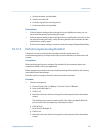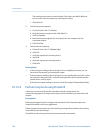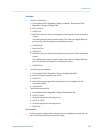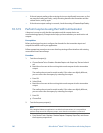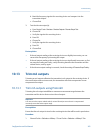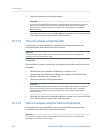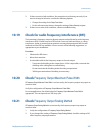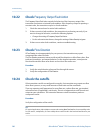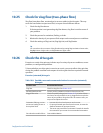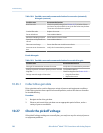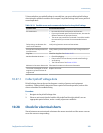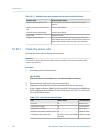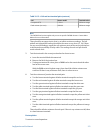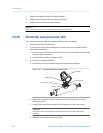
2. If there are active fault conditions, the transmitter is performing correctly. If you
want to change its behavior, consider the following options:
• Change the setting of mA Output Fault Action.
• For the relevant status alarms, change the setting of Alarm Severity to Ignore.
3. If there are no active fault conditions, continue troubleshooting.
10.19 Check for radio frequency interference (RFI)
The transmitter's frequency output or discrete output can be affected by radio frequency
interference (RFI). Possible sources of RFI include a source of radio emissions, or a large
transformer, pump, or motor that can generate a strong electromagnetic field. Several
methods to reduce RFI are available. Use one or more of the following suggestions, as
appropriate to your installation.
Procedure
• Eliminate the RFI source.
• Move the transmitter.
• Use shielded cable for the frequency output or discrete output.
- Terminate the shielding at the output device. If this is impossible, terminate the
shielding at the cable gland or conduit fitting.
- Do not terminate the shielding inside the wiring compartment.
- 360-degree termination of shielding is unnecessary.
10.20 Check Frequency Output Maximum Pulse Width
If Frequency Output Maximum Pulse Width is set incorrectly, the frequency output may report an
incorrect value.
Verify the configuration of Frequency Output Maximum Pulse Width.
For most applications, the default value for Frequency Output Maximum Pulse Width is
appropriate. This corresponds to a 50% duty cycle.
10.21 Check Frequency Output Scaling Method
If Frequency Output Scaling Method is set incorrectly, the frequency output may report an
incorrect value.
1. Verify the configuration of Frequency Output Scaling Method.
2. If you changed the setting of Frequency Output Scaling Method, check the settings of all
other frequency output parameters.
Troubleshooting
Configuration and Use Manual 205



